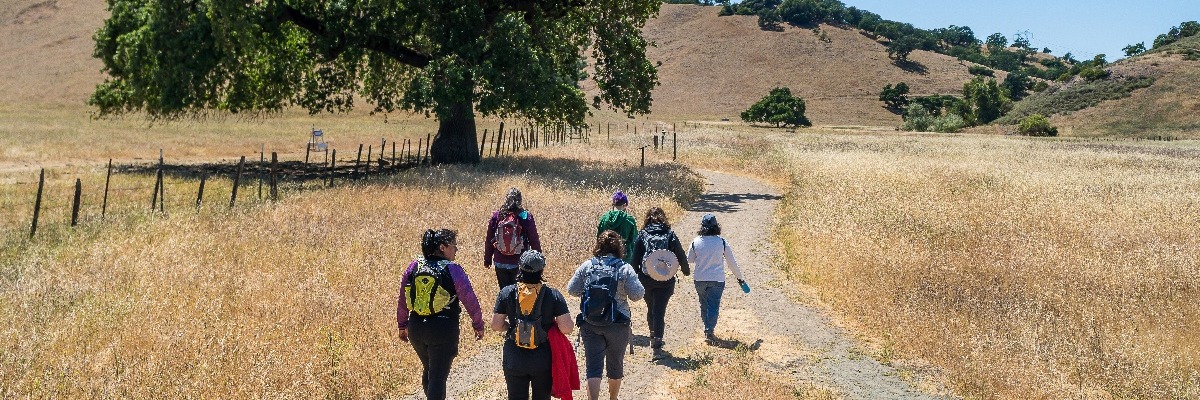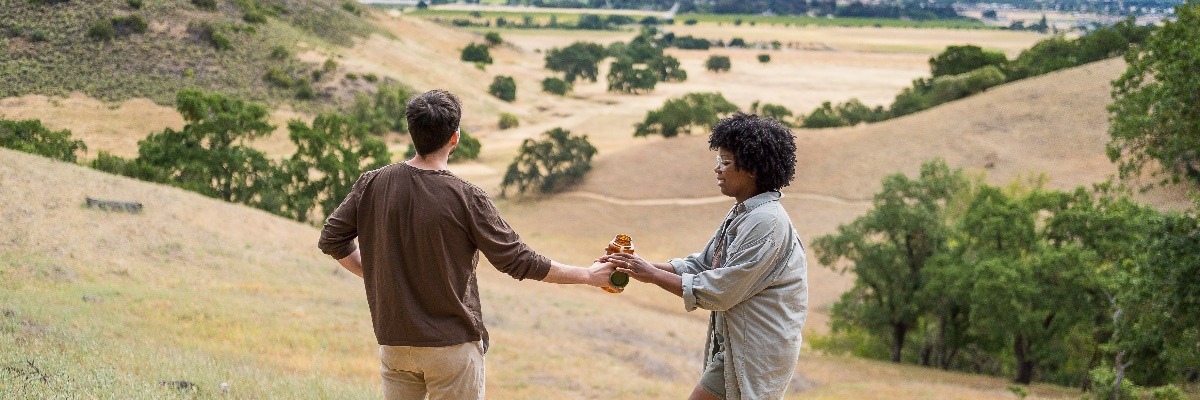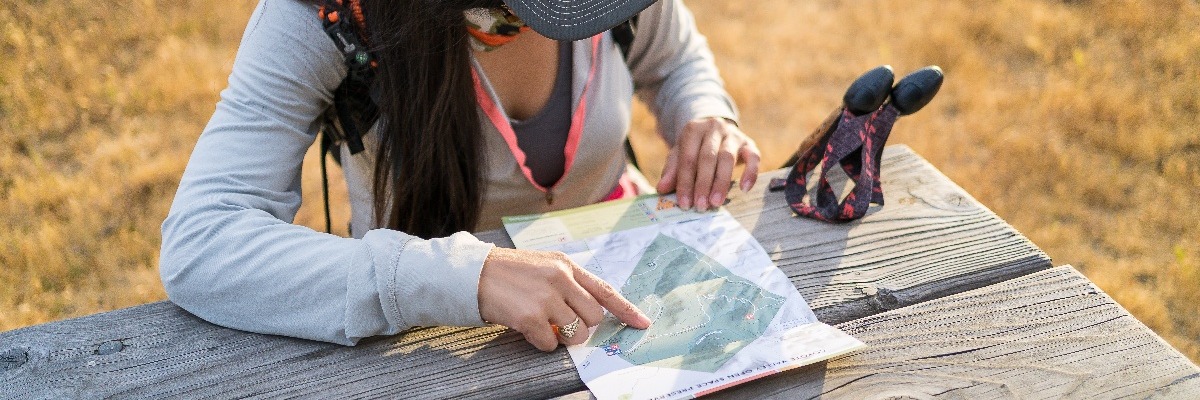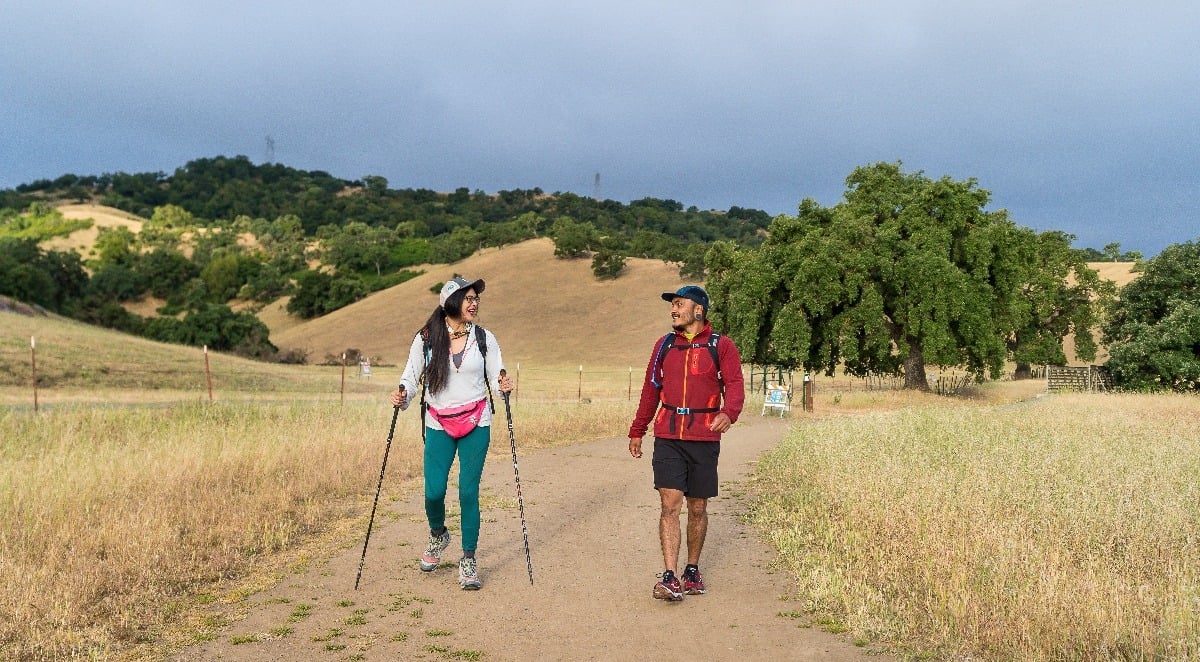Not everyone needs Bear Grylls' level of wilderness expertise to stay safe outside in nature. The smallest safety measures can make the biggest difference – and can even save your life!
During your next outdoor adventure – and ALL outdoor adventures – consider following these simple and useful tips for recreating safely and responsibly:
1. Hike with a friend
“The buddy system” -- a tip as old as time, and for good reason!
You may be prepared for the unexpected, but if it happens, it’s always nice to have someone you know there for support...and not to mention good company!

2. Be present
Even on a well-maintained and well-traveled trail - always stay alert and aware of your surroundings. This will allow you to more easily share the trail with others by hearing and seeing who’s behind or in front of you, and bonus – it will help you take in more of the sights and sounds of nature! The wind in the trees, the birds chirping, your shoes on the trail...trust us, it’s worth it.
3. Don’t use earbuds
Music is nice to have while exercising, however having the ability to listen to our surroundings greatly increases our awareness and can help us avoid danger. If you absolutely need the tunes to keep you pumped, always leave one earbud out so you can stay aware of what’s going on around you.
 4. Tell someone where you’re going
4. Tell someone where you’re going
You never know when cell service will get spotty out in nature, so it's always safer to tell someone where you are and what time you expect to be back. On the rare chance that you get hurt, lost, or stuck out on the trail, at least someone will know where to send help.
5. Carry a safety whistle or personal alarm
In the event of an emergency, use a whistle or alarm to sound an alert. This will let fellow trail users know that you need help.

6. Go during busier hours
If you’re hiking alone, consider visiting preserves when they’re more heavily trafficked. While there may be a bit less solitude, having people around means there is more help around if you need it.
7. Pack extra water
Dehydration can be life threatening and it can happen year-round. Bringing extra water can protect you from heat illness, fatigue, and prevent you from getting thirsty (and or grumpy) on your adventure!

8. Download, print, or snap a photo of the trail maps
Getting lost in nature is a nice figure of speech, but in reality, it’s no fun and can be life threatening. Avoid this by staying on designated trails and have a map handy just in case you need to orient yourself.
9. Visit trails you're familiar with
While it’s fun to visit trails you’ve never been on before, if you’re going alone, consider exploring one you’re already familiar with. This will decrease the likelihood of getting lost and will generally increase your comfort level out there!
 10. Come prepared
10. Come prepared
Check the weather before you leave so you know how to dress and what to expect. Keep an emergency kit in your vehicle, and always recreate with some basic first aid supplies. Don’t forget to pack any medications you may need – especially inhalers!
11. Learn about local wildlife
Wildlife live all over the open spaces of Santa Clara Valley. For the most part, these animals will try to avoid you, but coyotes, bobcats, mountain lions, and rattlesnakes may be seen. If you encounter wildlife on the trail, keep your distance, back away slowly, and do not run.
Ticks can also be found throughout the open spaces and trails of Santa Clara Valley. To reduce your likelihood of being bitten, be sure to stay on the trail, use insect repellent, wear long sleeves and long pants, and try tucking your pant legs into your socks.
Visit our Plants & Animals page to learn more!
12. Be kind to others
Nature is for everyone, and all are welcome at open spaces. Respect the land, respect the wildlife, and respect each other.
We thank you for protecting yourselves and others by taking safety seriously when out exploring the preserves.
For more tips on how to stay safe on preserves, visit our Conditions & Guidelines page, and read our Beginner’s Guide to Hiking.
Last updated on 2/9/2022

